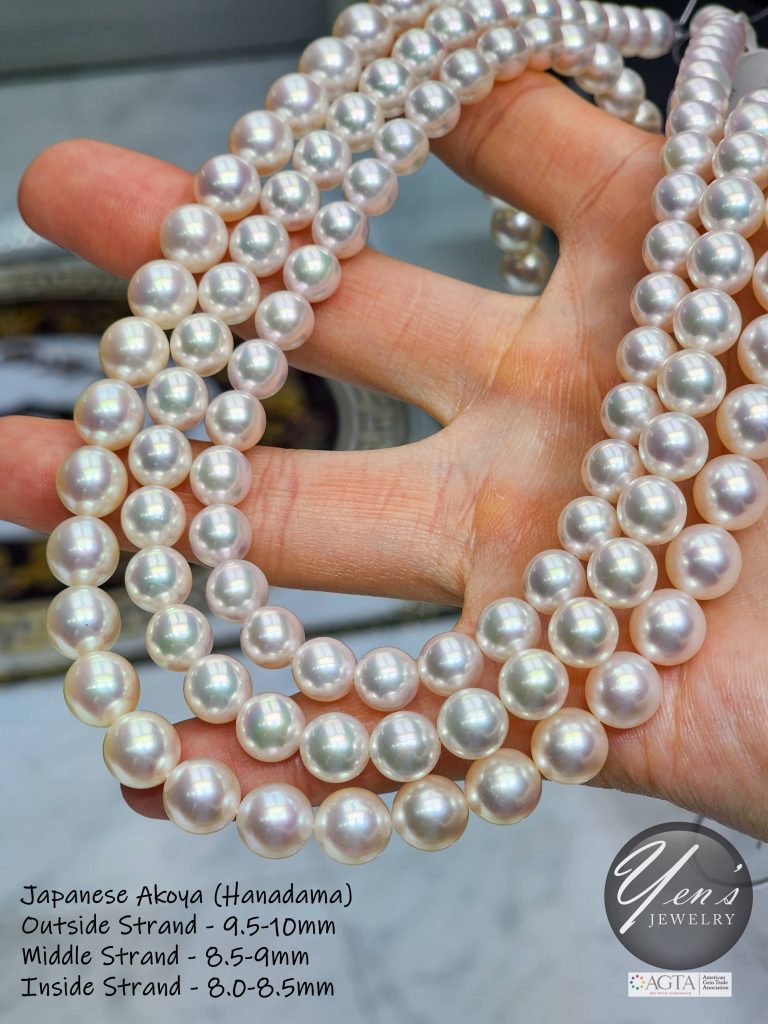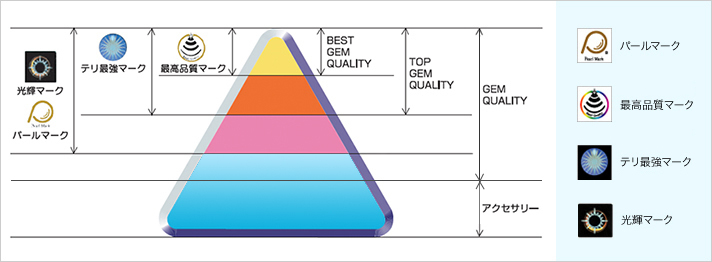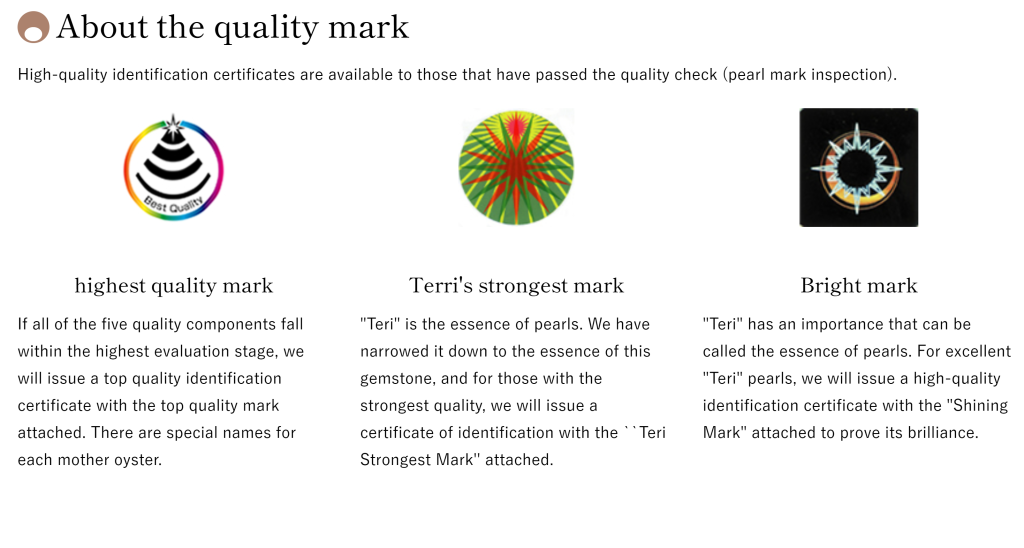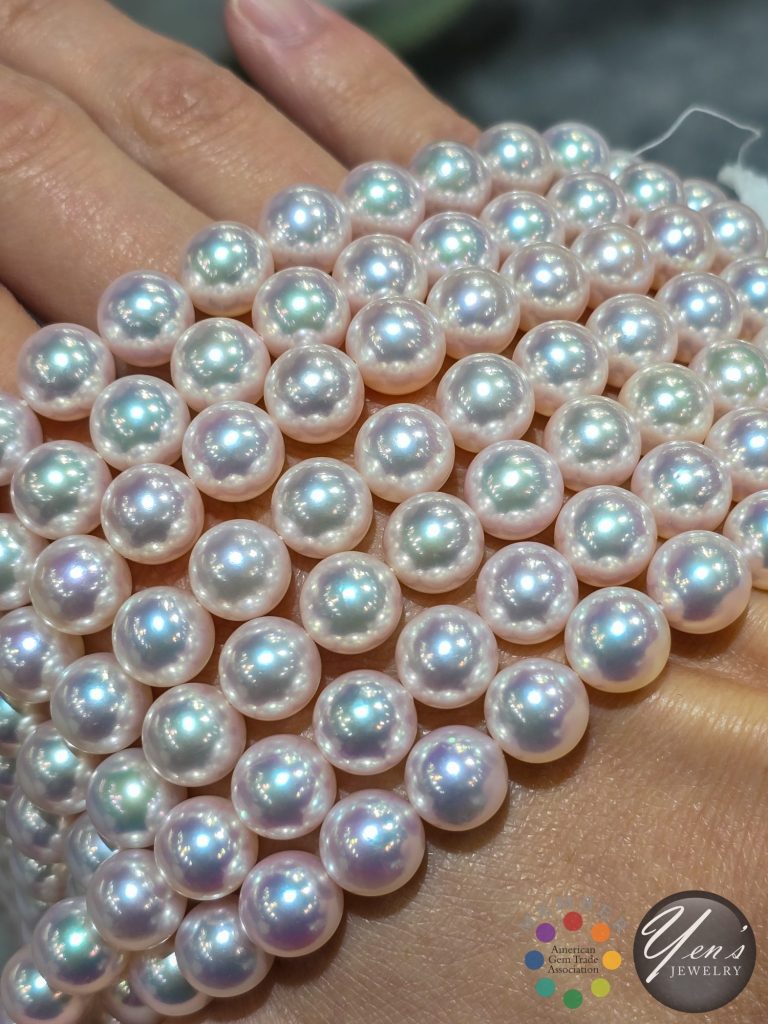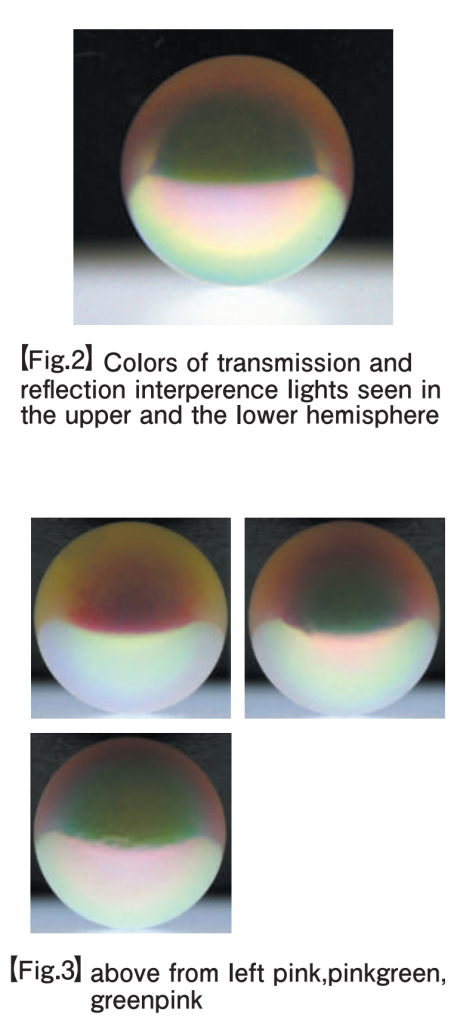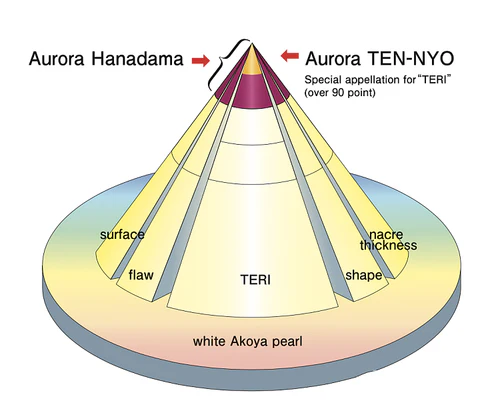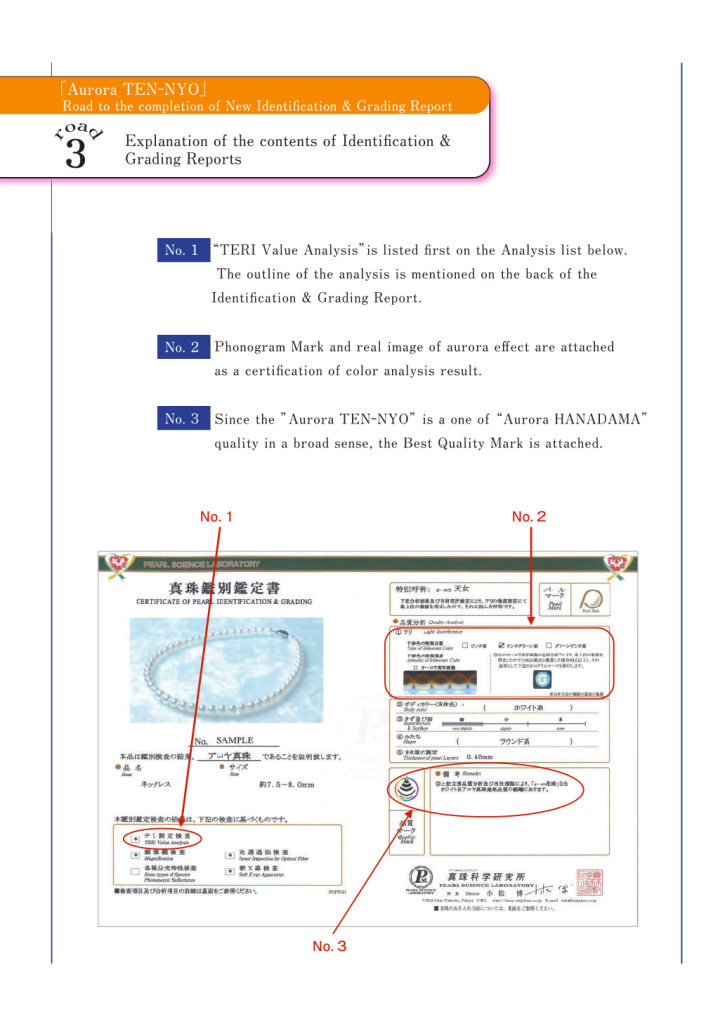Hanadama Pearls: The Pinnacle of Akoya Pearl Quality
In the world of Akoya pearls, few names resonate with the same prestige as Hanadama. The term “Hanadama” was introduced by Kokichi Mikimoto, the visionary behind cultured pearls, to signify his most exquisite creations. Translating to “Spherical Flower” in Japanese, these pearls are often referred to as “Flower Pearls” within the industry. The name captures the delicate pink hues that evoke the beauty of Japan’s cherry blossoms in spring.
The Birth of Hanadama Pearls
From the moment they are harvested, Hanadama pearls are destined for greatness. Their journey begins in the pristine waters where they are nurtured by oysters, forming layers of nacre that give them their unparalleled qualities. Each pearl is a testament to the meticulous care and precision involved in their creation.
The exceptional luster and orient of Hanadama pearls set them apart from all others. Luster, the brightness and sharpness of light reflected from the pearl’s surface, is extraordinarily sharp in Hanadama pearls, creating clear reflections. Orient, the iridescent play of colors caused by light diffraction within the nacre layers, adds a mesmerizing “soap bubble” effect, making each pearl a unique masterpiece.
Certification: The Seal of Excellence
Every Hanadama pearl undergoes rigorous testing by the Pearl Science Laboratory (PSL) in Tokyo, Japan, the only official Hanadama grading authority globally. The certification process is a blend of science and art:
- Magnification: Inspects surface quality, ensuring very slight blemishes with less than 5% inclusions per pearl. Only one deep inclusion is permitted per strand.
- Optical Fiber Inspection: Measures nacre depth at random points, ensuring a minimum thickness of 0.40mm per side.
- Soft X-ray Apparatus: Verifies nacre depth.
- Teri-value Analysis: Analyzes light reflection to confirm strong luster.
- Aurora Effect: Uses white light to observe iridescence, revealing strong pink and green colors.
These stringent standards ensure that every Hanadama pearl is a symbol of superior quality, embodying the perfect balance of luster, orient, and nacre thickness.
Aurora TEN-NYO: A Step Above Hanadama
The Emergence of Aurora TEN-NYO: Beyond Perfection
While Hanadama pearls represent the pinnacle of Akoya pearl quality, the Aurora TEN-NYO pearls take this excellence a step further. Imagine pearls so rare and exquisite that only 1-2% of the annual Akoya pearl harvest achieves this distinction. These are the Aurora TEN-NYO pearls, the crown jewels of the Akoya pearl world.
The secret to Aurora TEN-NYO’s allure lies in its TERI, the light interference that occurs on the surface of the nacre. This phenomenon is akin to the iridescence seen in peacock feathers, jewel beetles, and morpho butterflies. However, unlike these examples, where interference occurs solely through reflection, pearls exhibit light interference through both reflected and transmitted light.
Measuring the Magic: TERI
The measurement of TERI is an intricate process, more complex than measuring luster. Dr. Teizo Aida of Kumamoto University pioneered a method to quantify TERI, establishing a clear relationship between the vividness of the reflected light on a pearl and the strength of the TERI. The method involves a sophisticated color analysis, capturing the hues of both transmitted (upper hemisphere) and reflected (lower hemisphere) light interference. This analysis is visualized in a three-dimensional graph, showcasing hue, saturation (value), and luminous intensity (chroma). The total TERI score is calculated based on these attributes.
Explanation of Identification & Grading Reports
The Final Seal: Certification of Aurora TEN-NYO Pearls
The “TERI Value Analysis” is the first item listed on the analysis list of the Identification & Grading Report. Details of this analysis are provided on the back of the report, along with a phonogram mark and a real image of the aurora effect, certifying the color analysis result. Since Aurora TEN-NYO pearls are a subset of Hanadama pearls, they also bear the Best Quality Mark, signifying their unmatched quality.
A Journey to Rarity and Perfection
In the world of pearls, the journey from Hanadama to Aurora TEN-NYO is one of relentless pursuit of perfection. While Hanadama pearls set the standard for beauty and quality, Aurora TEN-NYO pearls surpass even these high standards, representing the rarest and most exquisite pearls, embodying the pinnacle of nature’s artistry and human craftsmanship. With only 1-2% of the annual harvest earning the Aurora TEN-NYO designation, owning one of these pearls is to possess a piece of heaven itself, a testament to the ultimate achievement in the art of pearl cultivation.
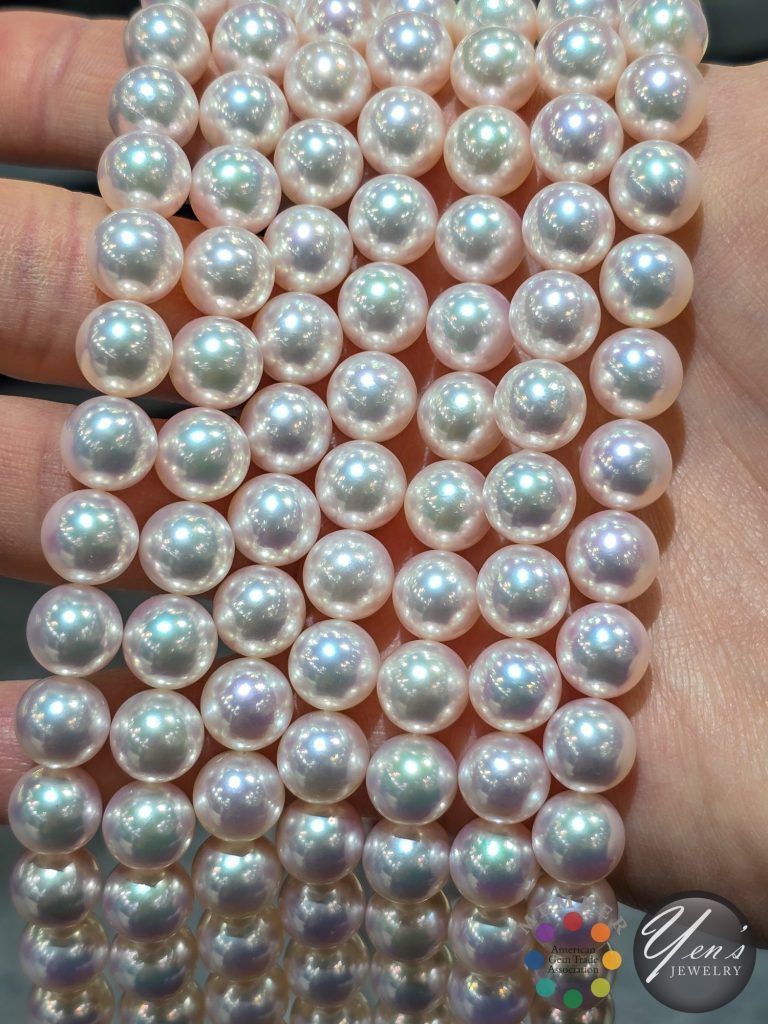
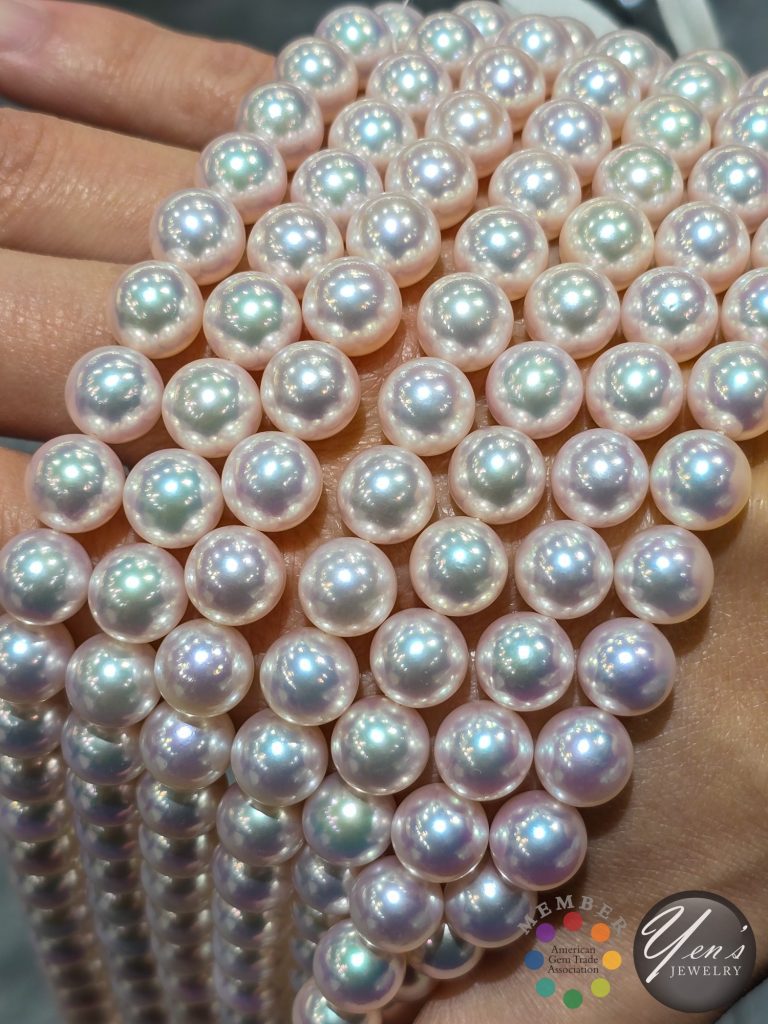
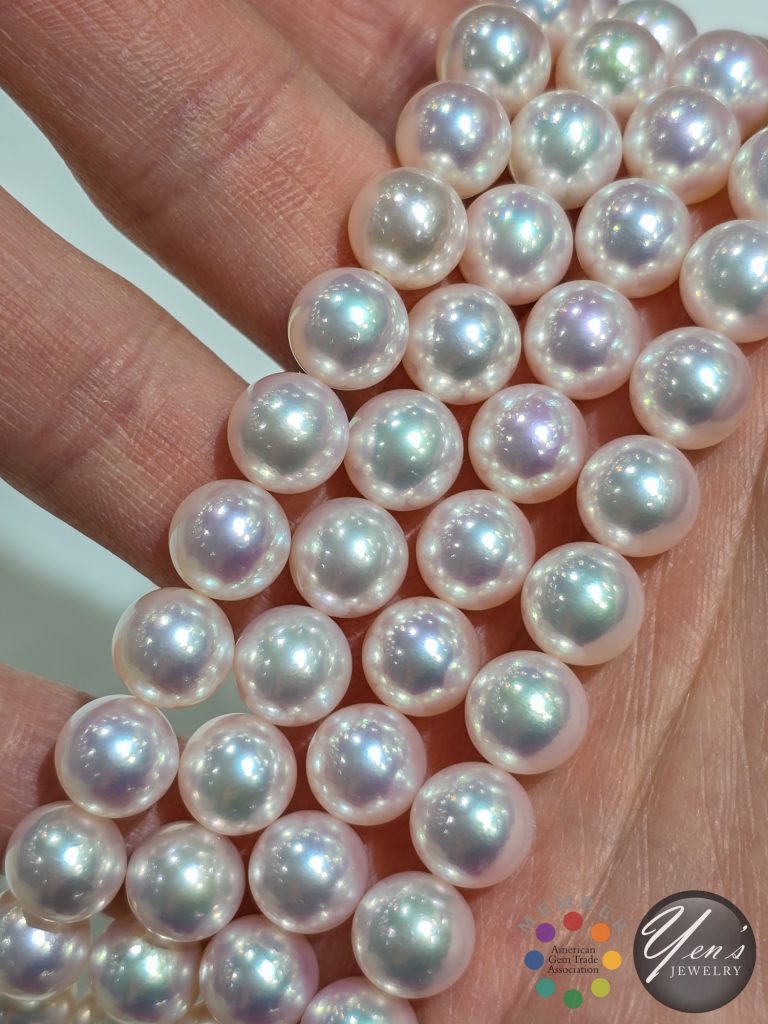
Disclaimer: (teri comparison/chart/cert sample) picture credits given to Pearl Science Lab of Japan. https://sinjuken.co.jp/

